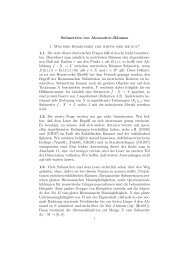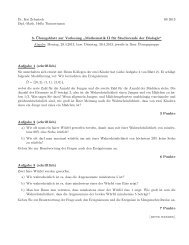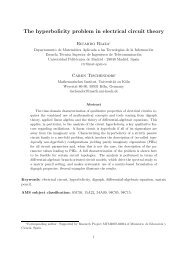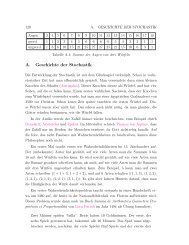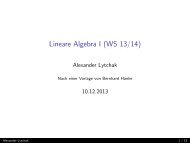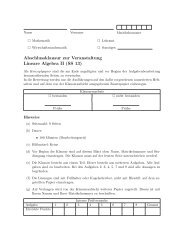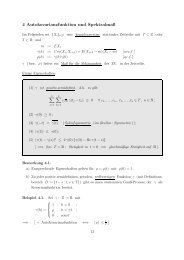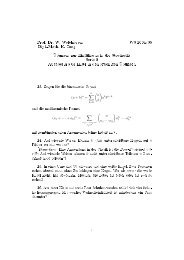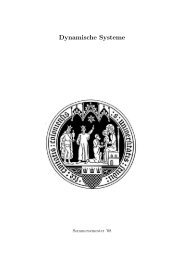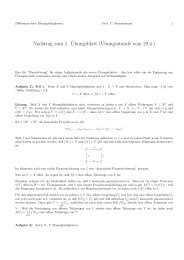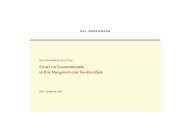Inhaltsverzeichnis - Mathematisches Institut der Universität zu Köln
Inhaltsverzeichnis - Mathematisches Institut der Universität zu Köln
Inhaltsverzeichnis - Mathematisches Institut der Universität zu Köln
You also want an ePaper? Increase the reach of your titles
YUMPU automatically turns print PDFs into web optimized ePapers that Google loves.
DMV Tagung 2011 - <strong>Köln</strong>, 19. - 22. September<br />
Shun-Jen Cheng<br />
Academia Sinica, Taiwan<br />
Kostant homology formula for oscillator representations of classical Lie superalgebras<br />
Pierluigi Mösene<strong>der</strong> Frajria<br />
Politecnico di Milano<br />
Superalgebras and Theta correspondence over the real numbers<br />
The odd part of the super denominator of a basic classical Lie superalgebra is the character of the<br />
oscillator representation of the odd part of the superalgebra. It is then natural to use superalgebra<br />
techniques to study this representation. In particular, we will show how the generalized denominator<br />
formulas for basic classical Lie superalgebras can be used to <strong>der</strong>ive the Theta correspondence between<br />
representations of a compact dual pair.<br />
Fabio Gavarini<br />
Università degli Studi di Roma “Tor Vergata”<br />
Algebraic supergroups associated to simple Lie superalgebras<br />
For any finite dimensional (complex) simple Lie superalgebra I provide an explicit recipe to construct an<br />
algebraic supergroupe G (defined via its functor of points) whose tangent Lie superalgebra is g itself.To<br />
do that, I generalise the classical Chevalley method, which constructs a (semi-) simple algebraic group<br />
starting from any complex, f. d. (semi-) simple Lie algebra g and from a faithful f. d. g-module V: the basic<br />
ingredient to make use of is the datum of a so-called “Chevalley basis”. I shall show that one can do<br />
the same when g is replaced with a simple Lie superalgebra: one introduces then a notion of “Chevalley<br />
basis”, one proves the existence of the latter, and then one essentially implements the same method (with<br />
many new aspects to deal with, of course). A remarkable fact is that this strategy is succesful both with<br />
the (simple) Lie superalgebras of classical type and with those of Cartan type—somehow extending the<br />
range of application of Chevalley’s original idea.<br />
Besides this “existence” result, I shall present also a “uniqueness” one: every connected algebraic supergroup<br />
whose Lie superalgebra be (f.d.) simple is isomorphic to one of the supergroups that I just<br />
constructed. Thus one eventually finds a complete classification of such supergroups.<br />
Literatur<br />
Fioresi, R., Gavarini, F. (2011). Chevalley Supergroups. Mem. Amer. Math. Soc., in press. ar-<br />
Xiv:0808.0785.<br />
Gavarini, F. (2008). Chevalley Supergroups of type D(2,1;a). arXiv:1008.1838.<br />
Fioresi, R., Gavarini, F. (2010). On the construction of Chevalley Supergroups. In: Supersymmetry in<br />
Mathematics and Physics, Lect. Notes Math., to appear. arXiv:1008.1838.<br />
Fioresi, R., Gavarini, F. Algebraic supergroups with classical Lie superalgebras, in preparation.<br />
Gavarini, F. Algebraic supergroups of Cartan type, in preparation.<br />
133




